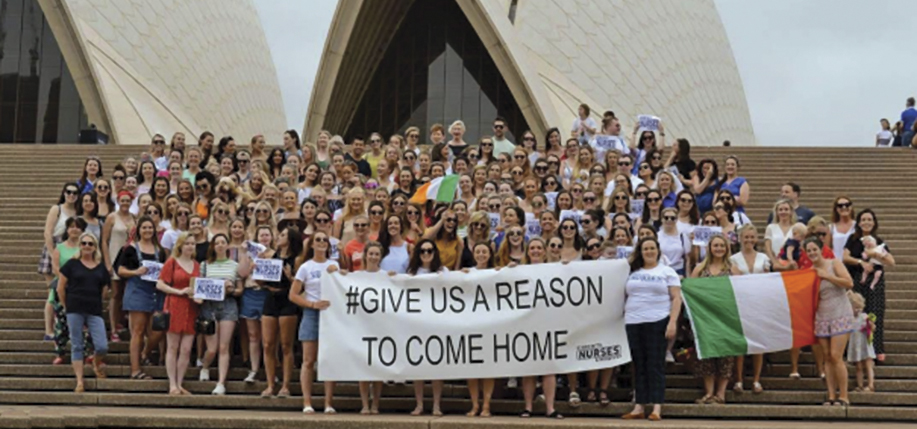Ireland’s nurses went on strike on January 30 in a dispute over pay and staff shortages. There were three separate 24-hour stoppages and a planned three-day strike set for February 12, until the strike was suspended February 11 for three weeks as part of a recommendations by the Labour Court.
The strike was organized by the Irish Nurses and Midwives Organization (INMO) and the Psychiatric Nurses Association. The INMO had requested a 12-percent pay increase, which would bring nurses in line with other health professionals, such as physiotherapists, and to the same level of compensation they received before their salaries were cut with the downturn in the economy at the end of 2006.
Over 250 Irish nurses working in Australia gathered at the Sydney Opera House January 19 to show their support for the strikers, saying “Give us a reason to come home.”
“It is not a competitive pay rate that Ireland is offering, and therefore there is a recruitment crisis in Ireland,” said nurse Laura Phillips in a video of the rally.

One nurse says she “literally earns double” working in the Middle East as compared to nurses working in Ireland. In response to the initial proposed agreement with the government, Aine McCarthy, a student nurse who had been out on the picket line every day of the strike, tweeted, “I’m hurt, disappointed and totally begrudging my career choice today.”
Further talks did not reach a conclusion as we went to press. About 90,000 patients had medical appointments cancelled during the stoppages, but what wasn’t widely reported is that the nurses never stopped caring for patients. They picketed during lunch breaks and after work.
A 2017 year-end report on Journal.ie said that Irish hospitals are spending thousands of dollars in overseas recruitment drives, when it should be encouraging its own nurses to stay at home. There are currently 65,000 nurses in Ireland: 51,000 are Irish, 4,600 are from India and 4,265 are from the Philippines. Only 270 are from the United States. ♦ Maggie Holland
Irish Nurses Strike for Fair Pay


Leave a Reply